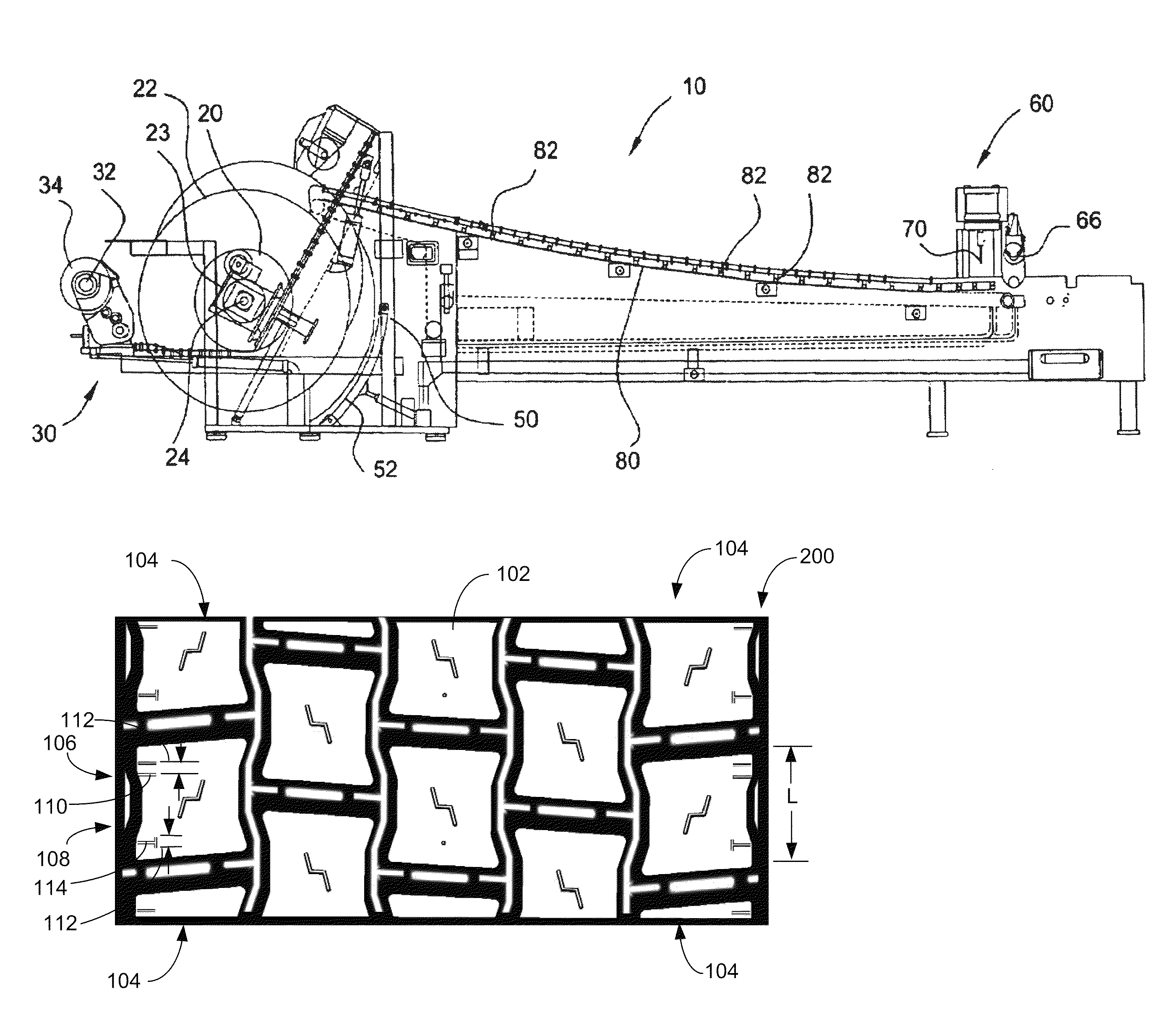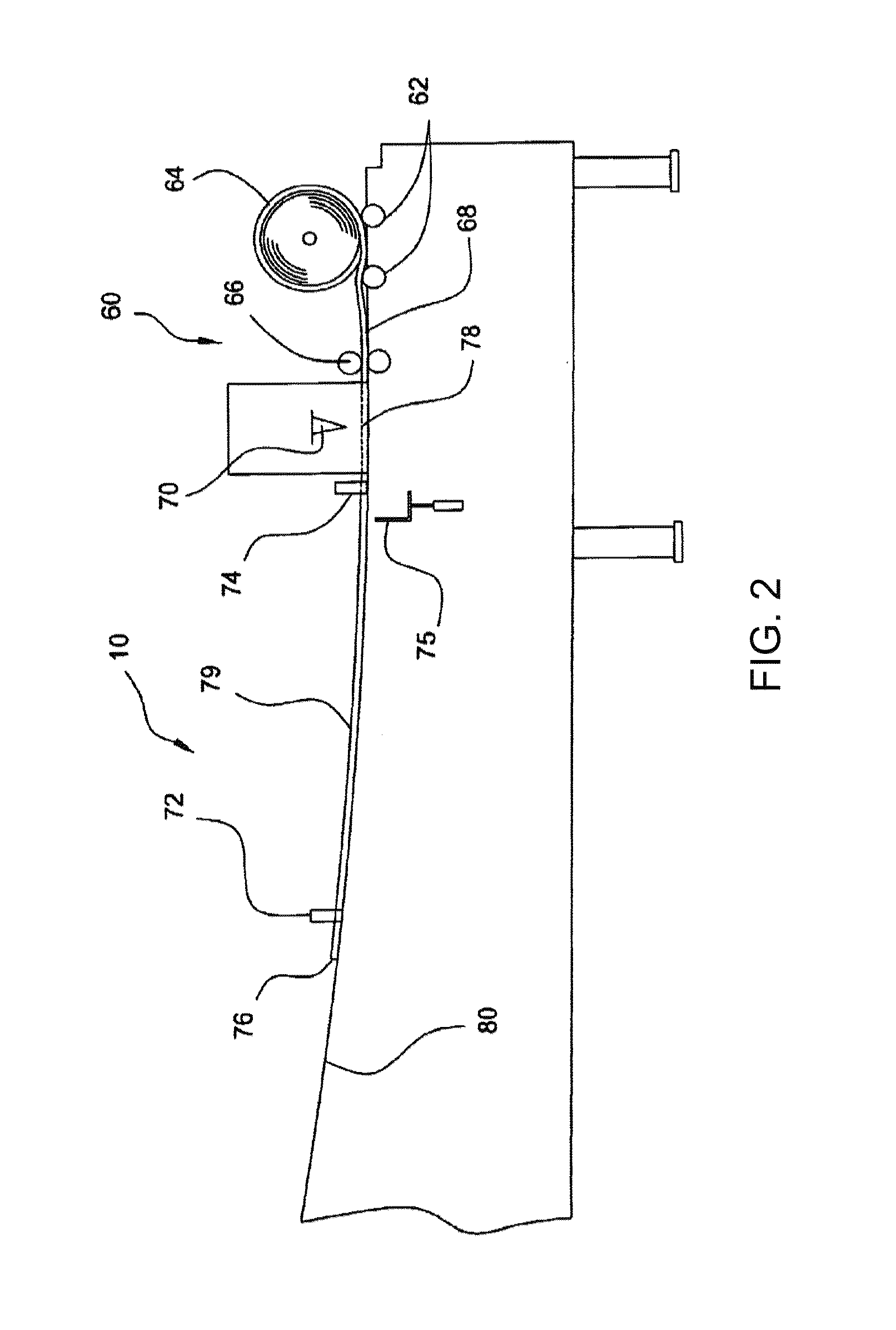Method and apparatus for improved tread splicing
a technology of retreaded tires and cutting processes, applied in the direction of non-skid devices, transportation and packaging, other domestic objects, etc., can solve the problems of inaccurate manual intervention in the cutting process of the length of the tread to provide a substantially uninterrupted tread pattern around the entire periphery of the retreaded tire, increase the difficulty of such procedures, and increase the variability of retreaded tire performance and bonding characteristics. , to achieve the effect of efficient and cost-effective,
- Summary
- Abstract
- Description
- Claims
- Application Information
AI Technical Summary
Benefits of technology
Problems solved by technology
Method used
Image
Examples
Embodiment Construction
[0023]A retreading machine or integrated tire bench 10 is shown from a side view in FIG. 1, and a detailed view thereof is shown in FIG. 2. In the illustrated example, the tire bench 10 is a semi-automated retread tire building apparatus configured to assemble retread tires. The tire bench 10 includes a rotatable hub 20 for mounting a tire casing thereon, and a cushion gum applicator system 30 having a spindle 32. A roll of cushion gum 34 may be mounted on the spindle 32 and dispensed onto a tire casing 22 mounted on hub 20.
[0024]The tire bench 10 may include a device for measuring the circumference of the casing 22 mounted thereon. In the illustrated example, a measurement wheel 50 is provided on a measurement arm 52. Measurement arm 52 is pivotable by actuation, for example, through a pneumatic cylinder, to engage a surface (either a tire casing, or cushion gum applied to a tire casing). Measurement wheel 50 rotates when it comes into contact with the periphery of the rotating tir...
PUM
| Property | Measurement | Unit |
|---|---|---|
| Length | aaaaa | aaaaa |
| Surface area | aaaaa | aaaaa |
Abstract
Description
Claims
Application Information
 Login to View More
Login to View More - R&D
- Intellectual Property
- Life Sciences
- Materials
- Tech Scout
- Unparalleled Data Quality
- Higher Quality Content
- 60% Fewer Hallucinations
Browse by: Latest US Patents, China's latest patents, Technical Efficacy Thesaurus, Application Domain, Technology Topic, Popular Technical Reports.
© 2025 PatSnap. All rights reserved.Legal|Privacy policy|Modern Slavery Act Transparency Statement|Sitemap|About US| Contact US: help@patsnap.com



